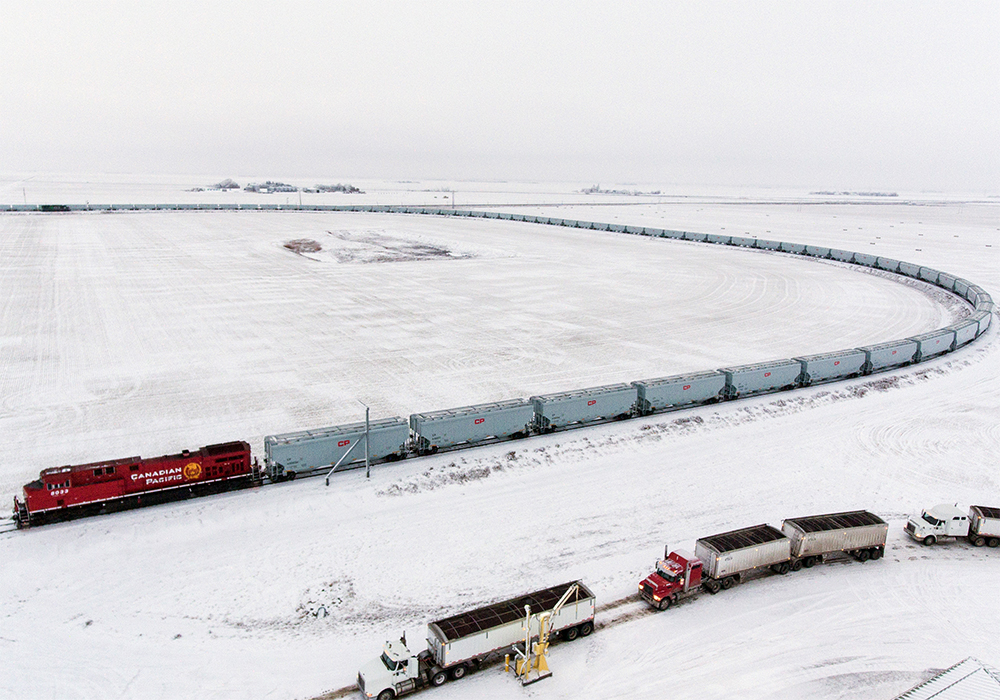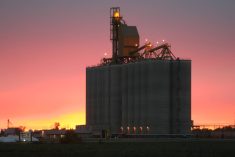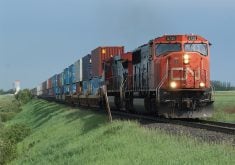Like the infinity symbol, the high efficiency product train forms a loop with no beginning and no end.
It’s like a crop cyclotron that is accelerating 40 percent more grain down the rails per train and shortening the end-to-end times of each train.
“It’s a complete loop that just moves, stays together. We don’t break it up,” Elizabeth Hucker, Canadian Pacific Railway’s assistant vice-president of sales and marketing, said during the Fields on Wheels conference.
The HEP train is an 8,500 foot (2.6 kilometre) monster that pulls 147 of the new, bigger grain cars and keeps its locomotives attached both when loading at country elevators and when dumping at port.
Read Also

Powdery mildew can be combine fire risk
Dust from powdery mildew can cause fires in combines.
By keeping the locomotives attached, the train doesn’t need to switch grain elevator engines in and out, doesn’t need to spend hours rebuilding air pressure in the braking system after loading and can leave immediately upon being filled.
That has helped get HEP country-to-port-and-back cycle times down to as low as seven days from the standard grain train of 10 to 11 days.
Each train can haul about 15,000 tonnes of grain, which means a panamax cargo ship can be filled with three to four trains, instead of the five trains that it usually now requires.
The bigger hopper cars, longer trains and shorter turnaround times combine to enormously increase the amount of grain it is possible to move down the tracks.
“This is a huge capacity grain for shippers that invested in the these HEP-qualified facilities,” said Hucker.
“We have created a premium product for our grain shippers, which includes the highest of incentives … and the most efficient service for the grain movements.”
Not all country elevators can handle HEP trains. Only facilities that can handle an 8,500 foot train and keep it off the mainline while loading and that can load it in less than 16 hours can receive HEP trains. Right now, 45 percent of the facilities on the CP network can handle HEP trains, with 50 percent expected to be reached by the end of 2023.


















